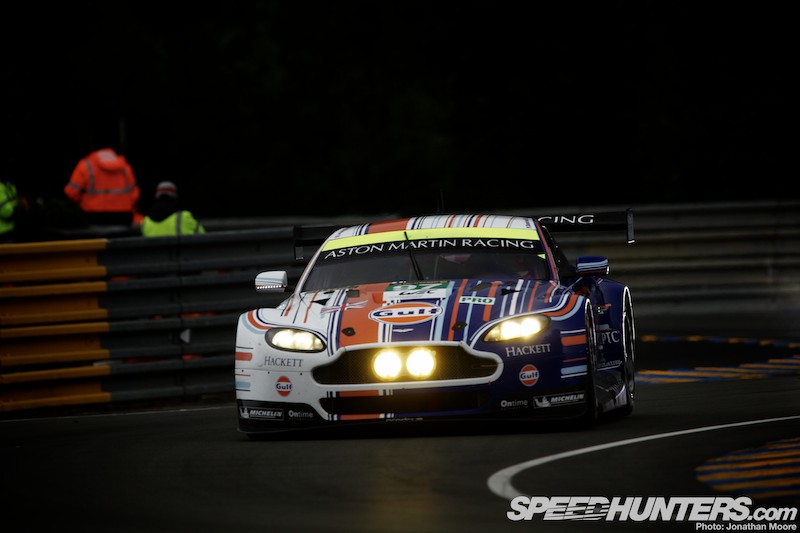
2013 was the 90th running of the Le Mans 24 Hours. There are only a few races in the world with the prestige and history of this event, and similarly few racing teams with the stature of Aston Martin, who themselves are celebrating their centenary this year. A huge effort was put into the team’s entry for 2013, and ahead of the race the mood was buoyant and positive.
Little did the team know how incredibly challenging the race would be, marred by the death of a driver and a redemptive victory lost in the final hours of the 24 hours. But the team showed resilience and dignity in the face of all that came their way. Here’s a tribute to their efforts last weekend in France.

The quality and strength in depth of this year’s 24 Hours field couldn’t be doubted. As was the case last year, Le Mans would be a round of the FIA World Endurance Championship, and after the opening two rounds, AM were leading both the GTE-Pro and Am classes going into the Le Mans weekend.
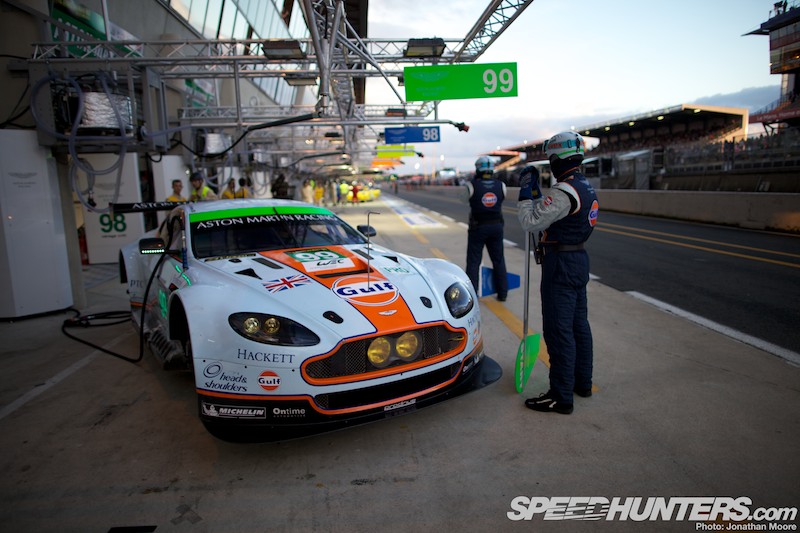
Although factory teams in the top LMP1 class were in a fallow period this year, with only ever Toyota and Audi on the cards to be slugging it out for the overall win, back in GTE there was an obscene wealth of top-line manufacturers fighting it out.
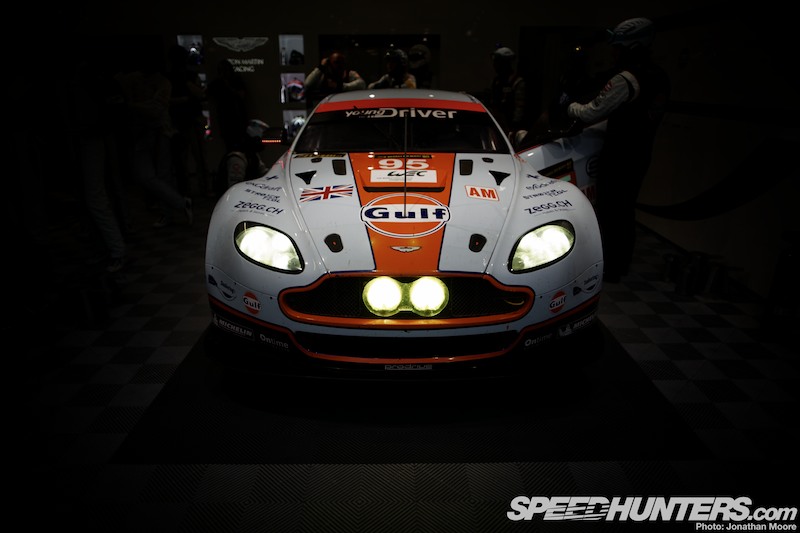
Aston Martin fielded an almighty five rumbling V8 Vantages across the Pro and Am classes: three in the former (#97, #98, #99) and two in the latter (#95, #96).
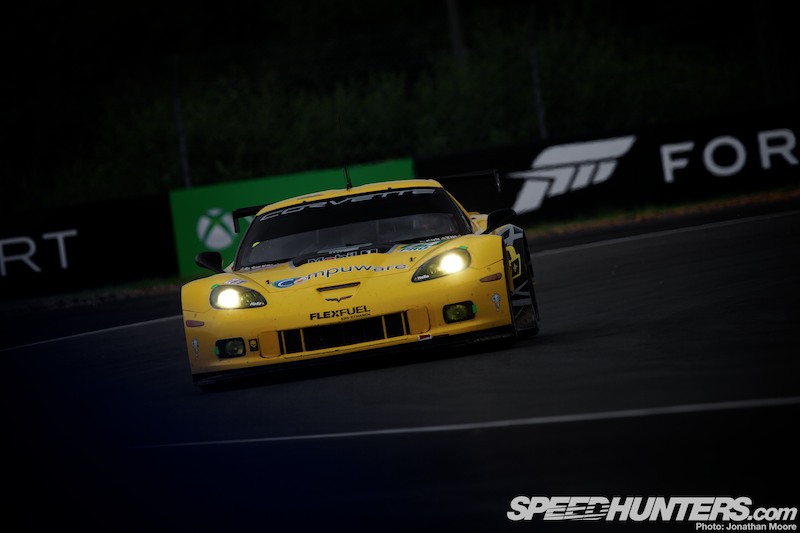
So what was the opposition like? Serious. Very serious. Lined up against them was a whole lot of factory-backed competition in the Pro class, and a wealth of privateers in Am. Corvette made their annual pilgrimage across the pond to take part in the French classic with a pair of C6Rs, though the Americans would sadly struggle for pace this year…
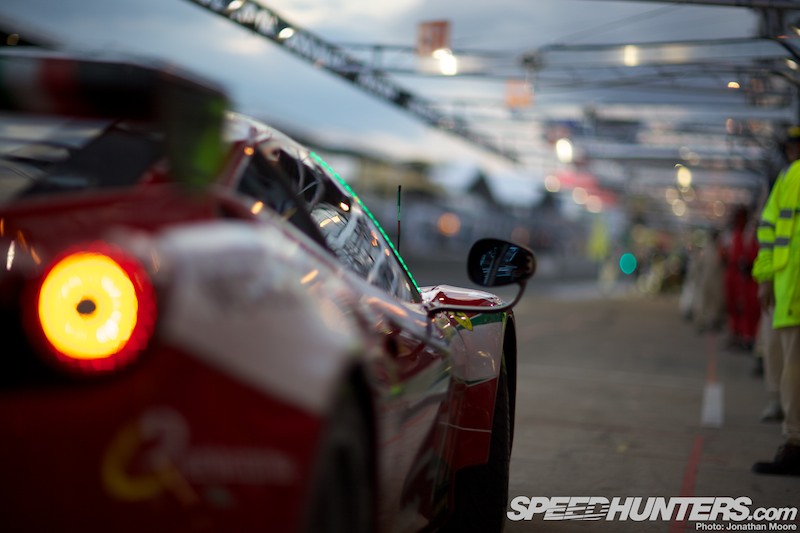
Ferrari provided tacit support for an armada of 458s (six run or co-run by AF Corse alone, two in Pro)…
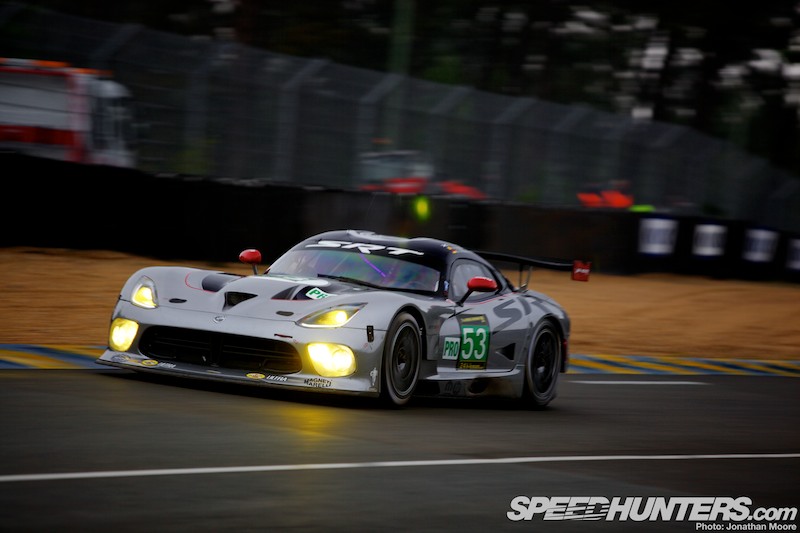
SRT brought the Viper back to its old stomping ground of La Sarthe…
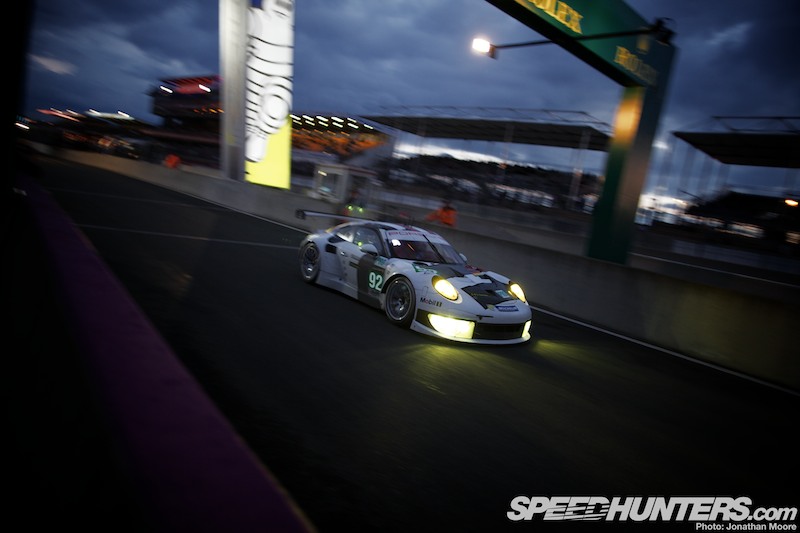
… and Porsche returned with their first full factory effort for well over a decade with the new 991-shape RSR, which would be run by veteran endurance specialists Manthey.
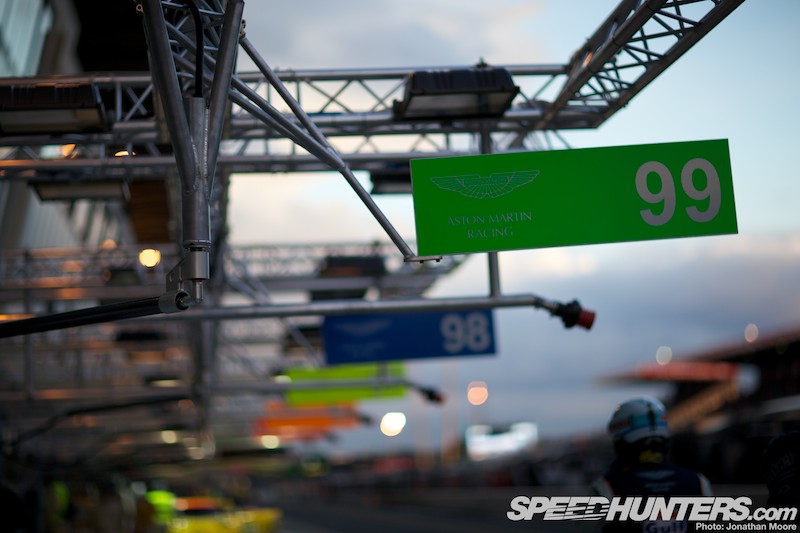
The first action for the team kicked off on the Test Day Sunday, two weekends before the main race itself.

This was the first chance to see all five Astons out on track: it seemed like there were even more than five, such was the frequency of their passing by me!
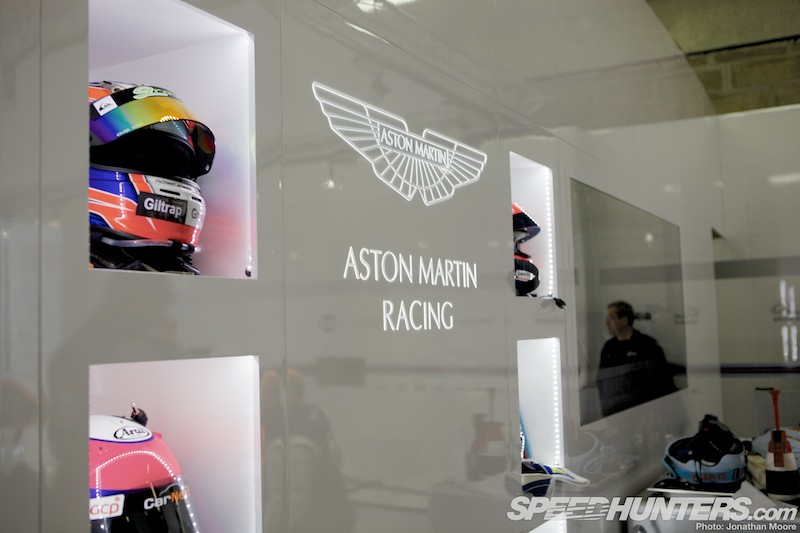
It was also the chance to see the set-up of the garages themselves, which positively gleamed.
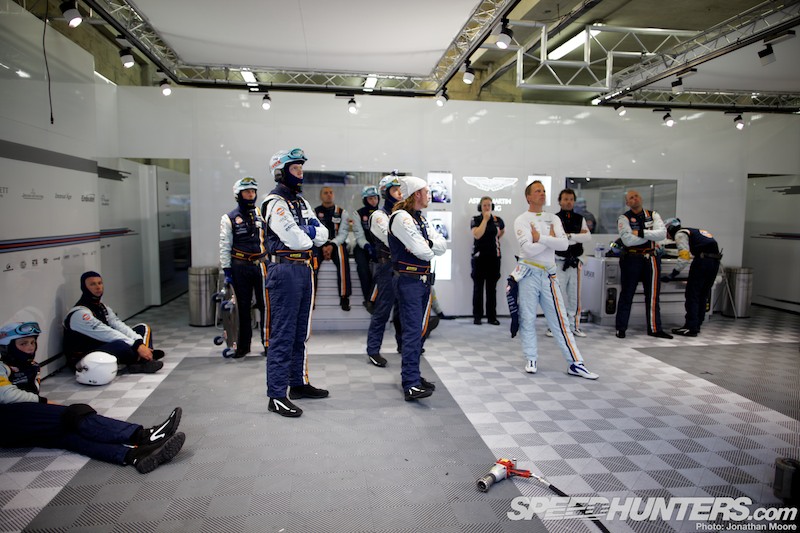
The team took up two double garages and a further adjacent single, which looked more like classy London showrooms than regular pit garages.

Out back of the multiple garages, a virtual city of trucks and awnings had been created to support the phalanx of Vantages…

… which meant carrying a supply of spares. A very large supply of spares.

The rear section of each garage contained parts of different types: here were engines and gearboxes…
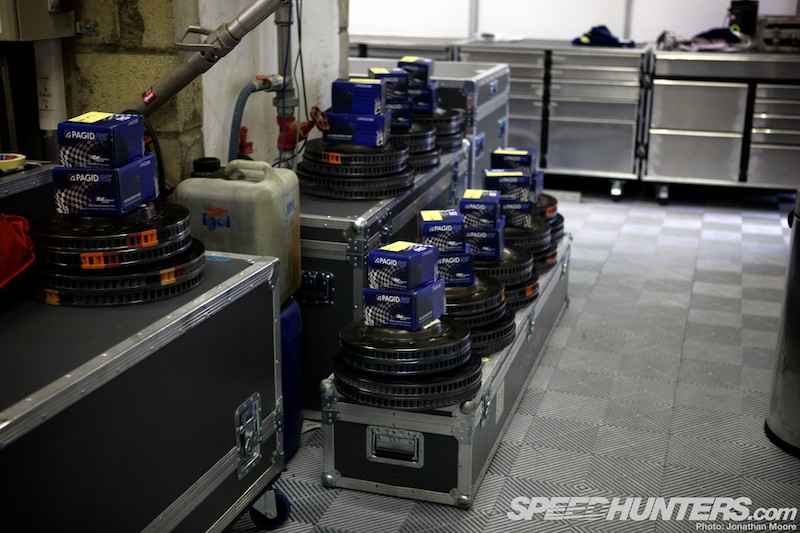
… and in the adjoining garage, towers of brake discs and pads were piled up.
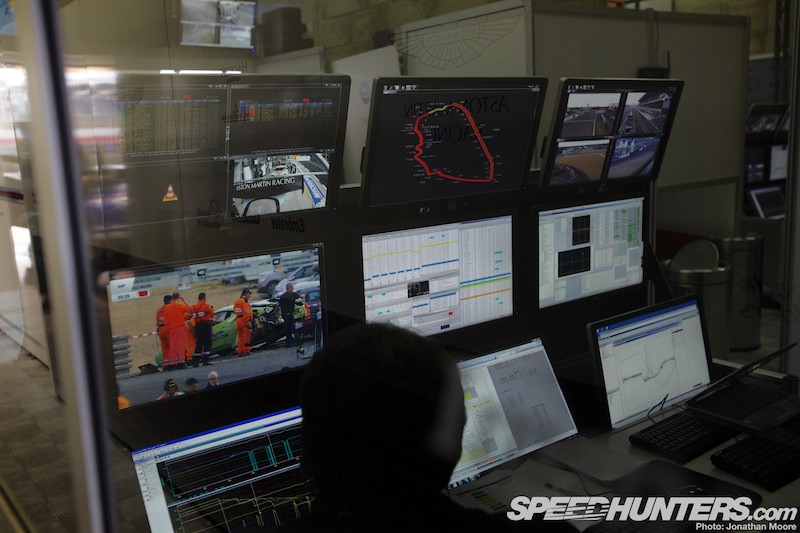
Each car had its own engineer and telemetry booth set-up: identical pre-fab constructions set up behind the main white boundary wall in each garage and full of screens being intently monitored.
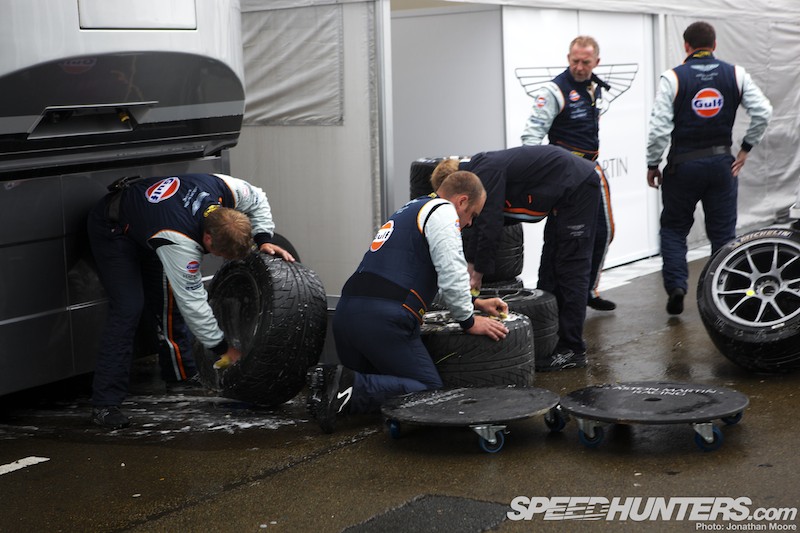
The quantity of rubber consumed at a race like Le Mans is phenomenal: the rear of the Aston Martin awnings were always full of team members scrubbing and checking rubber, or loading rims onto carts to ship to the nearby Michelin compound.
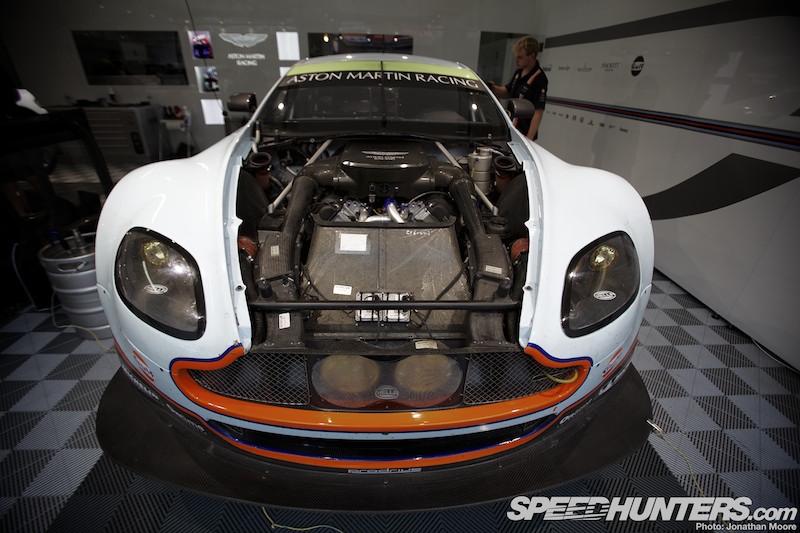
In the garages, when not out on track the Vantages rested on stands, major panels removed for easy access and wired into telemetry, which gave a fine view of the big V8 up front. After years of the screaming V12 of the DBR1 GT1s, it’s quite strange to hear the deep bass growl of the Vantage’s power unit, singing its low note almost in unison with the Corvettes.
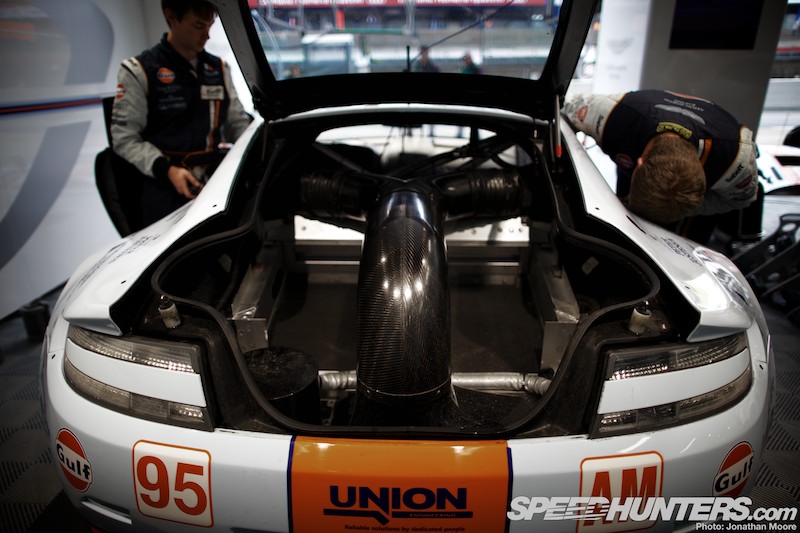
Out back is the big carbon fuel dump unit – and a lot of space. Who said a Vantage isn’t a practical car…
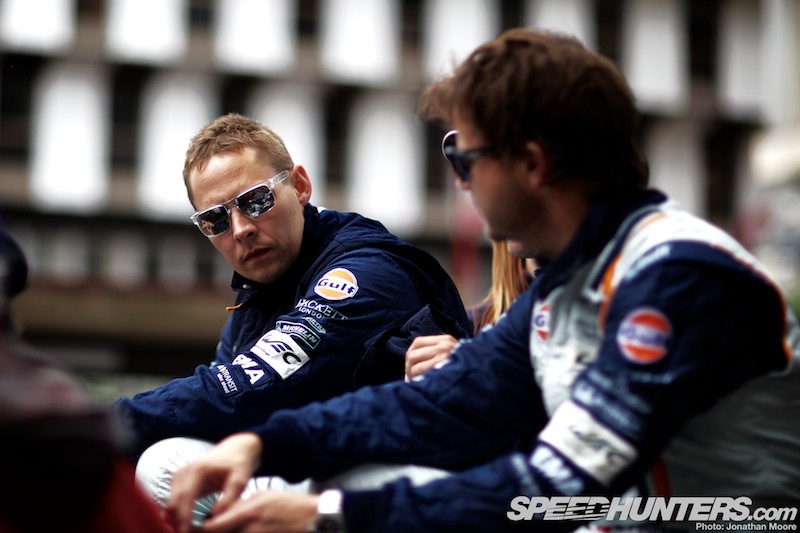
Five cars meant 15 drivers, and joining some long-time works drivers were some surprising faces. You may remember Jamie Campbell-Walter and Peter Dumbreck from Sumo Power’s GT1 programme, and Bill Auberlen was on loan from BMW for Aston’s Le Mans campaign. The big news this year was Bruno Senna joining the team, taking the opportunity to pitch for a World Championship after dropping out of Formula 1. Then the #95 Am car was an all-Danish line up, helmed by Allan Simonsen (above), alongside Christoffer Nygaard (ex-GT1) and Kristian Poulsen (WTCC).
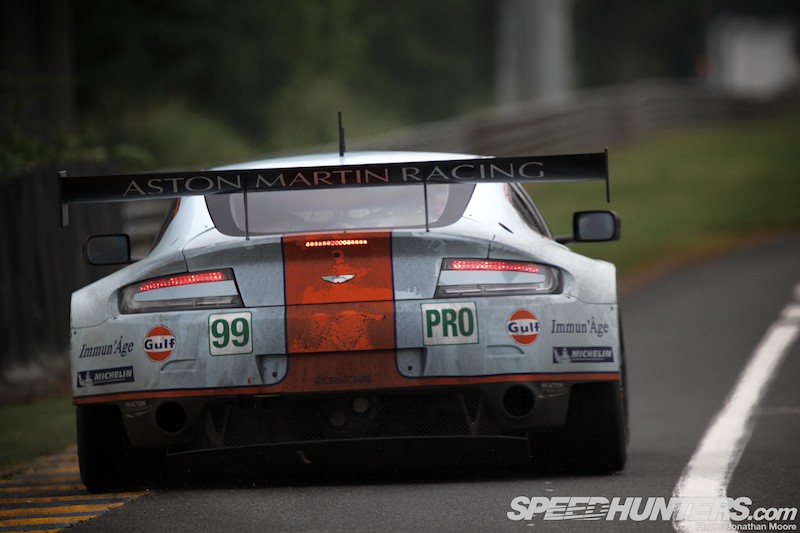
Two four-hour sessions and on-off rain showers later, and there were smiles all round in the Aston Martin garages: Peter in #97 had set the fastest time in GTE-Pro, with #99 just two tenths behind and #98 less than half a second slower…
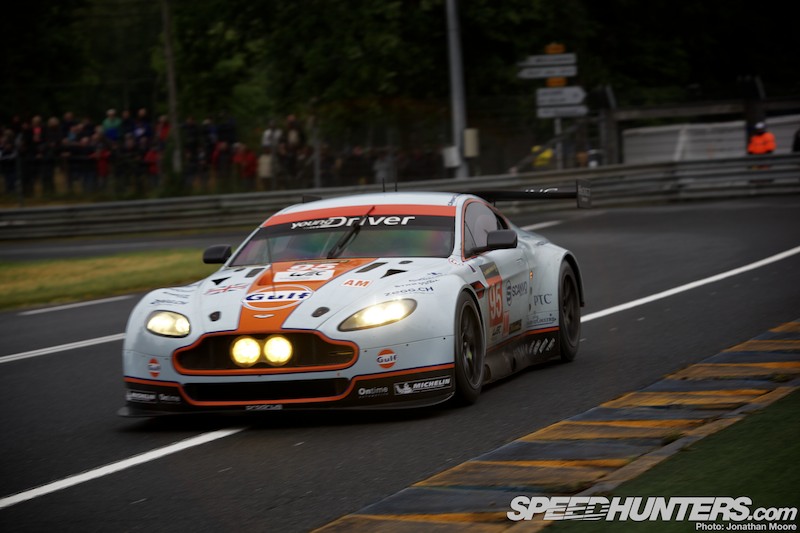
… and JCW posted the quickest lap in #96 in GTE-Am, with Allan right behind: a clean sweep of fastest class times for Aston.

However, the times were a bonus: the focus for the team had been as much about making sure all their drivers got seat time and that the engineers could start working on set-ups. It was looking good for qualifying.
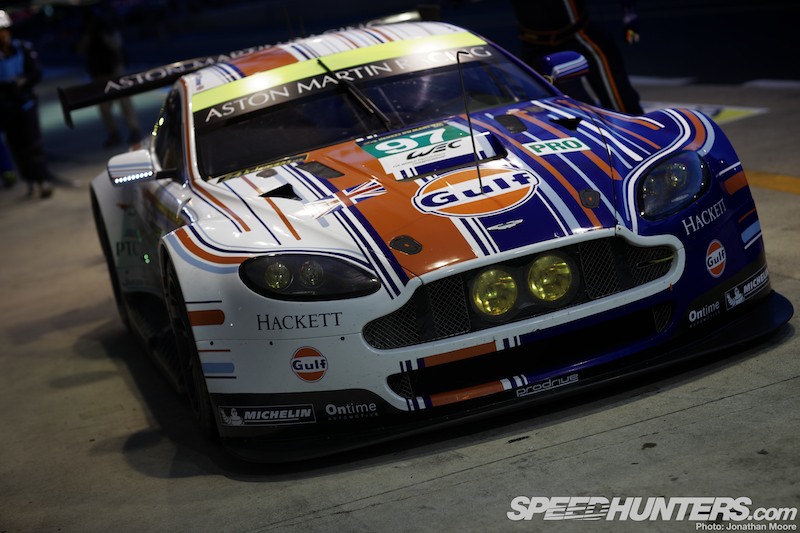
After the gap of a week, action then recommenced at La Sarthe, as the team reconvened, dusted down the cars and garages and headed for the annual scrutineering checks held in Le Mans town. That was the first chance the world had to see the #97 car’s new ‘daylight to dusk’ livery: the team were one of three unveiling ‘art cars’ for Le Mans, alongside Oak Racing’s LMP2 and the JMW Ferrari team, with both AM and JMW using fan-submitted liveries on their cars.
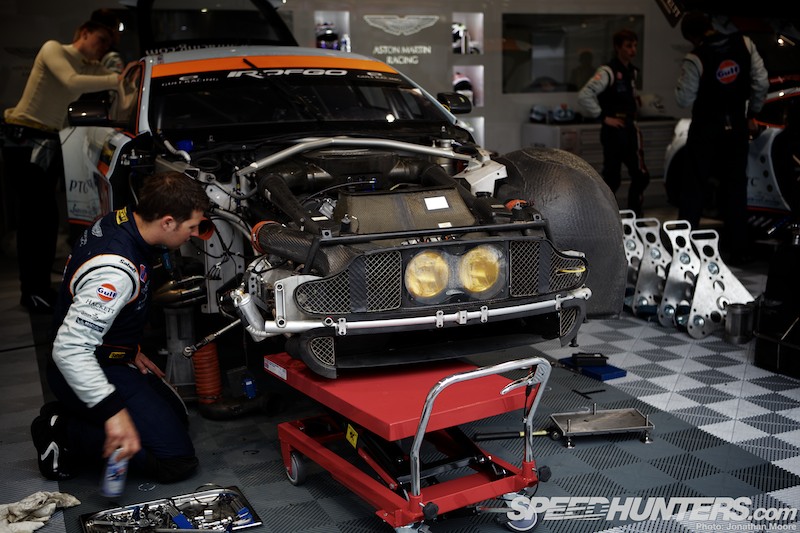
The first qualifying session took place on Wednesday evening, following a four-hour free practice session in which the #96 Vantage sustained some damage after contact with a wall.
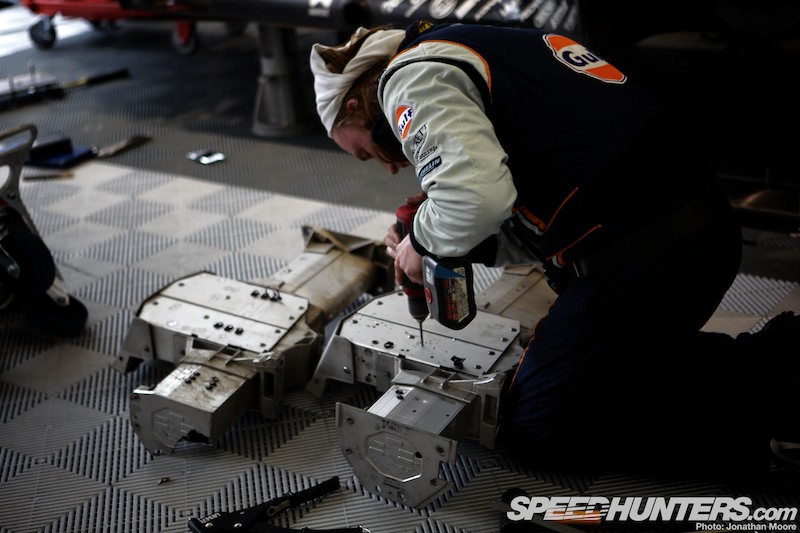
Mechanics busied themselves with sub assemblies and new crash structures to be bolted onto the damaged car.
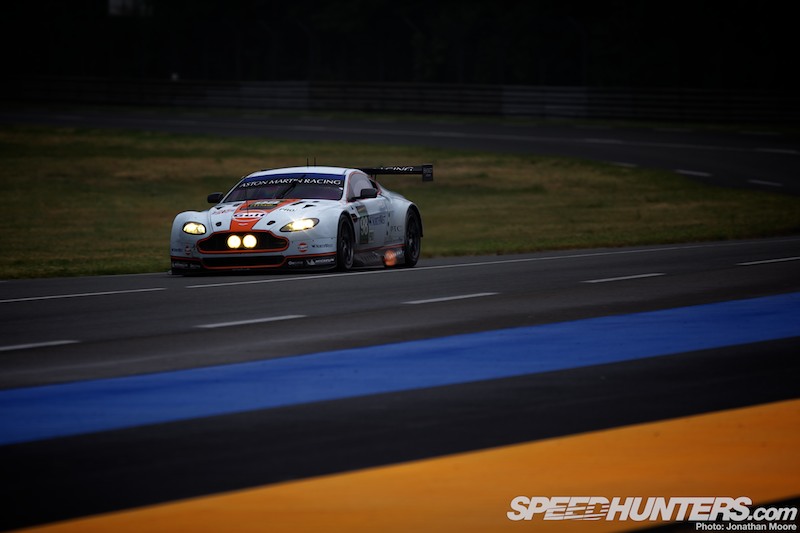
Despite the Vantages being awarded extra ballast after the Test Day (some last minute Balance Of Performance changes were made that affected several teams), an Aston still headed both classes as midnight struck. This time it was the turn of Frédéric Makowiecki in the #99 to top the time sheets with a 3m55s lap and #95 first in GTE-Am on a 3m58s.
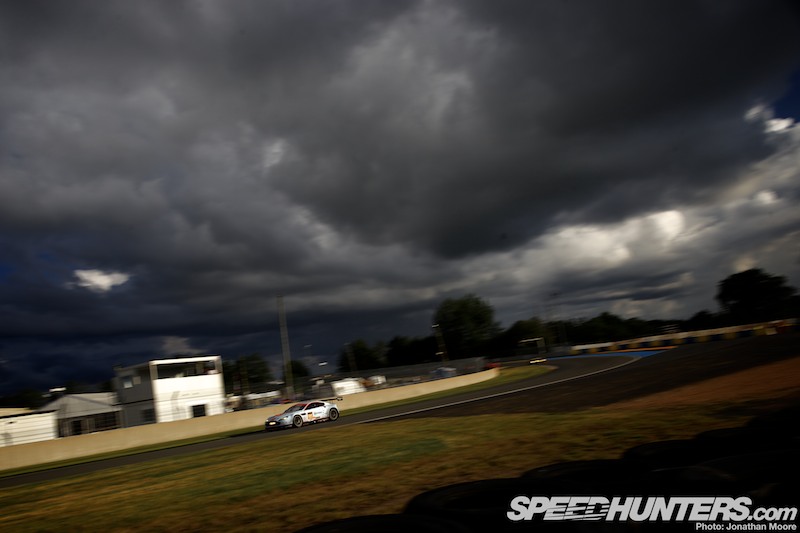
Even better, Vantages also occupied third and fourth in Pro and fourth in Am at the end of the first qualifying session, with more rain promised.
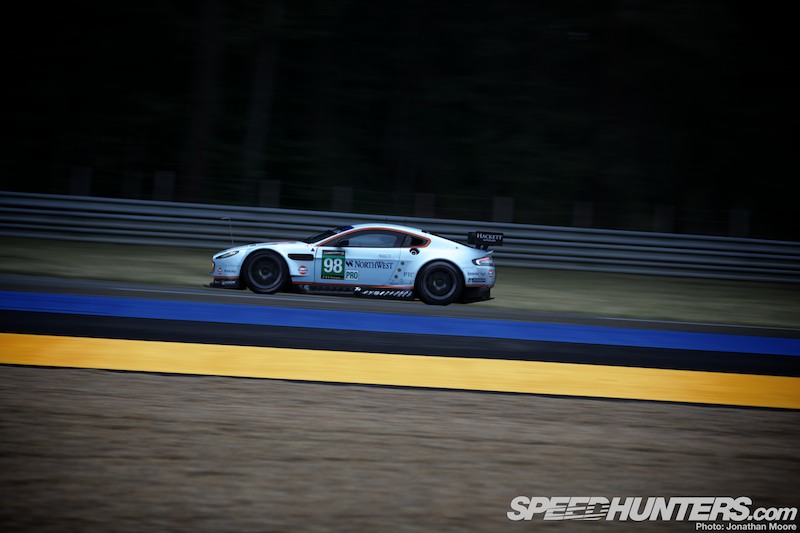
The schedule for Thursday was a pair of two-hour sessions, but yet more red flags intervened. The first session was cut short as another big section of barrier needed repairing (with times unrepresentative due to heavy rain), so the second session was started a half hour early to gain time back, as light began to fade.
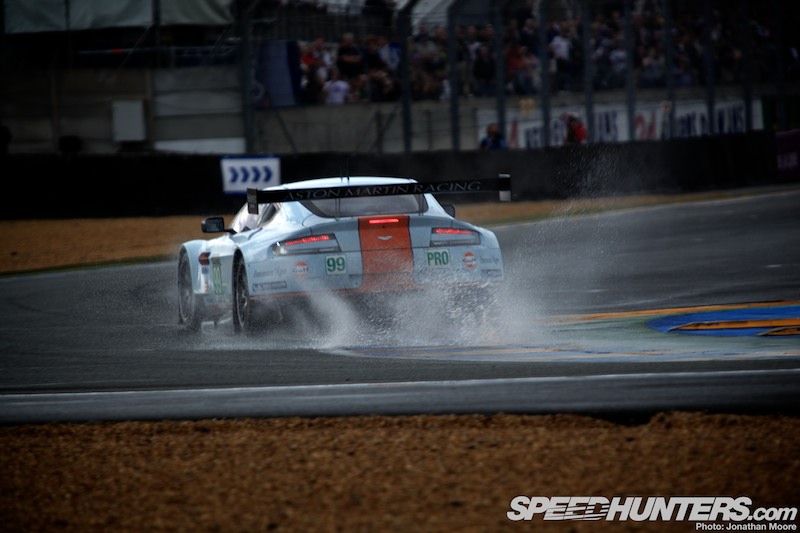
The weather really was against us all over the week. As they would do so many times over the race, the rain gods would wait until exactly the wrong moment to liberally douse the track; on Thursday it was literally just as the track was about to go green for the final qualifying – usually when the fastest laps are posted.
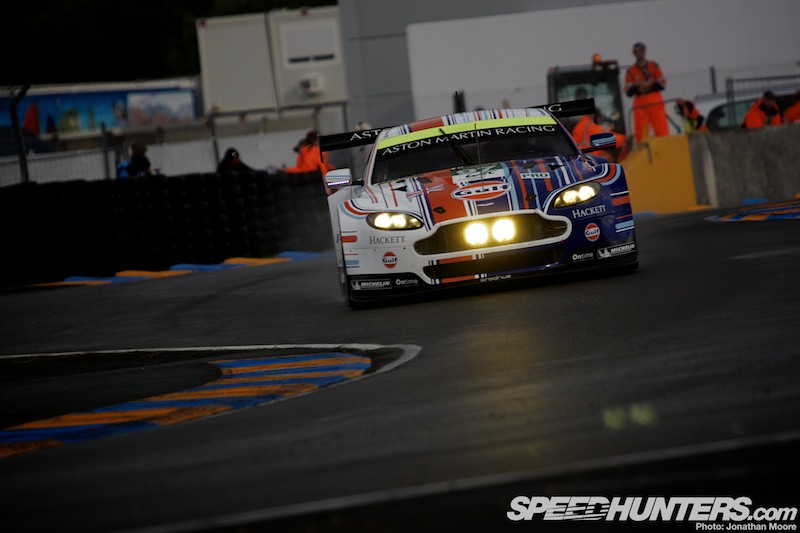
This time the track dried enough in the final quarter of an hour for times to fall further, and we were pleased to be treated to a traditional battle for poles across the classes as midnight approached. Both #99 and #97 improved their times in Pro, sweeping the front row for the race (29th and 30th overall, with Fréd beating his own 2012 pole time); in Am Allan Simonsen in the Danish #95 car topped the times with a 3m57s lap that put their Vantage in the midst of the Pro field on the grid (38th overall), with the #96 car just two spots behind in class.
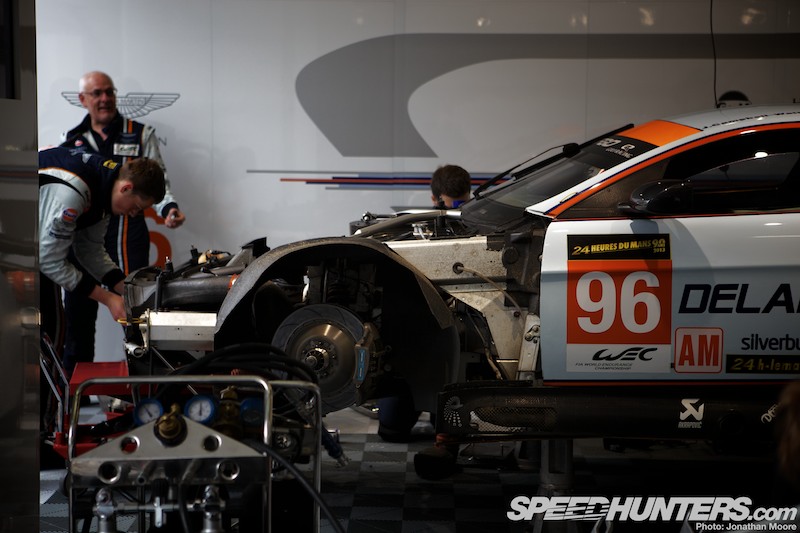
Friday is always a quiet day on track, though mechanics were hard at work in the pit-lane swapping in race engines.
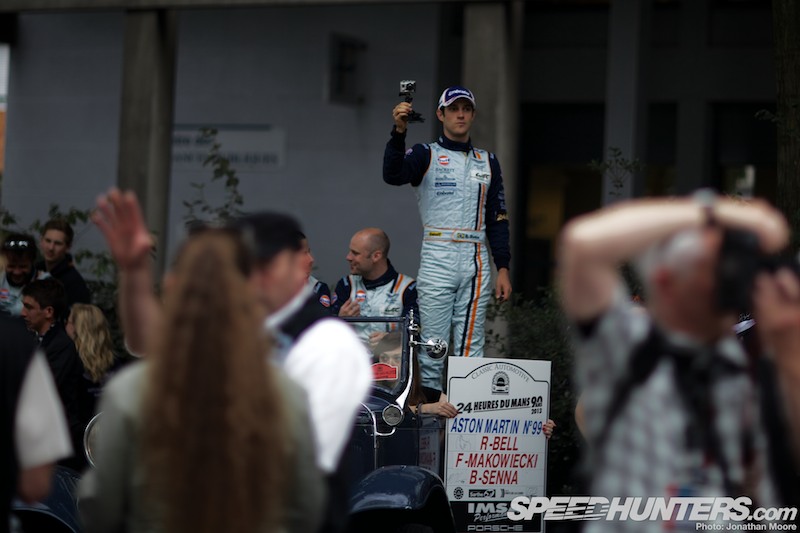
For the drivers, their main duty would be back in Le Mans town that evening, for the annual Parade Des Pilotes: the mass driver parade in front of over 100,000 spectators. It’s always a fantastic part of the race week: I love watching the drivers who have never experienced it before, where they’re made to feel like rock stars for a couple of hours! Even Bruno Senna, with his F1 experience, seemed impressed: it’s the antithesis of the arms-distance F1 keeps its drivers from the fans…
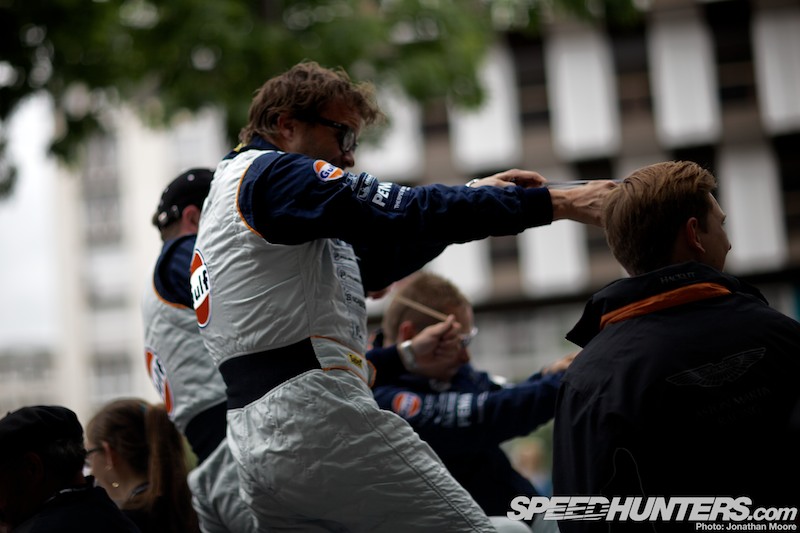
There are always long delays in getting going, so the driver trios end up spending a lot of time sitting on the back of their jalopies waiting for the off: the crews of the two Am Vantages decided to kill time by using the elastic bands from their batches of flyers to deadly effect…
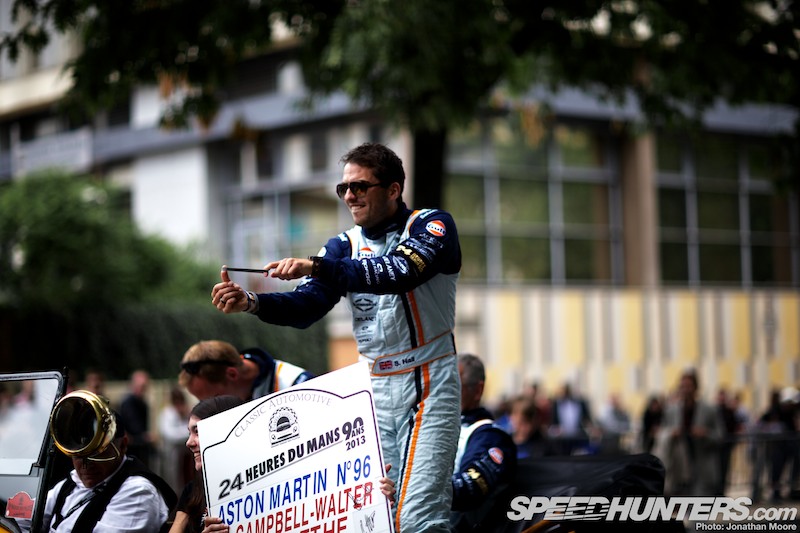
… which led to a long battle until ammunition was exhausted!
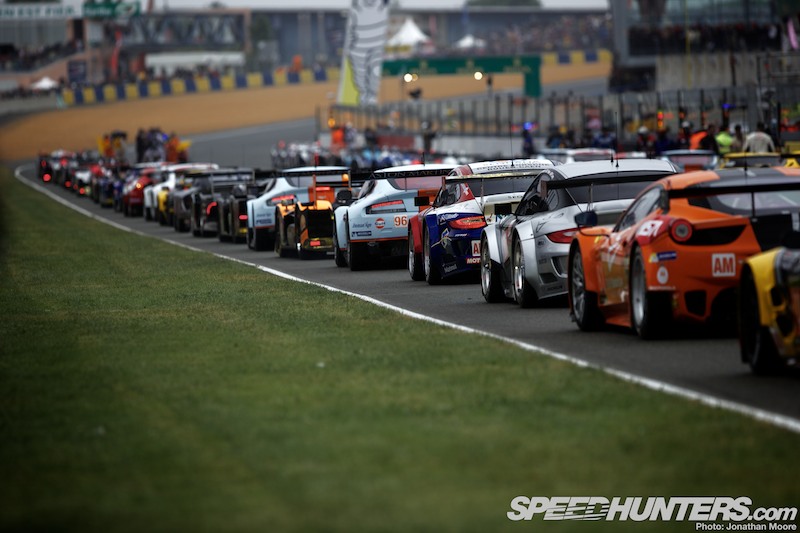
After an uneventful morning warm-up on race day, for Aston Martin and all the other teams it was a case of counting down the time to the 3pm start. The hours drag, then the minutes, and even when the cars take off for their formation lap and the engine noise subsides it seems like an eternity before the cars reappear at racing speeds.
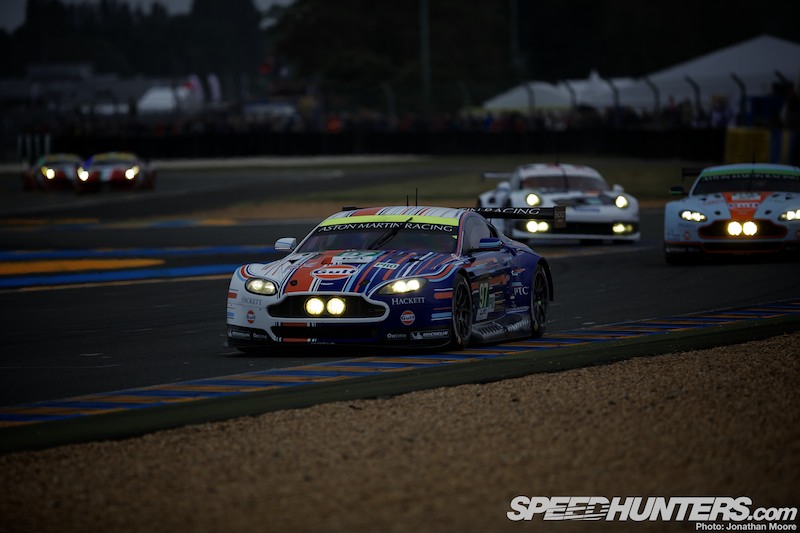
Things seemed good to start with. The leading Pro cars were fending off the advances of the 991 Porsches…
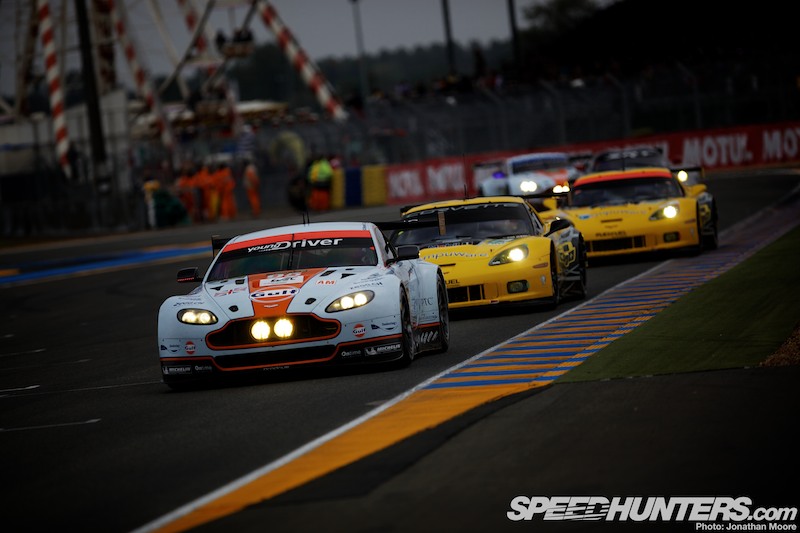
… and Allan Simonsen in #95 was leading the two Pro Corvettes. But then, just eight minutes into the 24 hours, as the GTE cars made their way through Tertre Rouge, Allan’s car speared off the track and into the barrier. Allan was mortally injured and rushed to hospital by the medical crew, but died later that afternoon. As the news filtered through there was anguish around the track, and no shortage of tears to be seen. There hadn’t been a fatal accident at Le Mans since 1997.
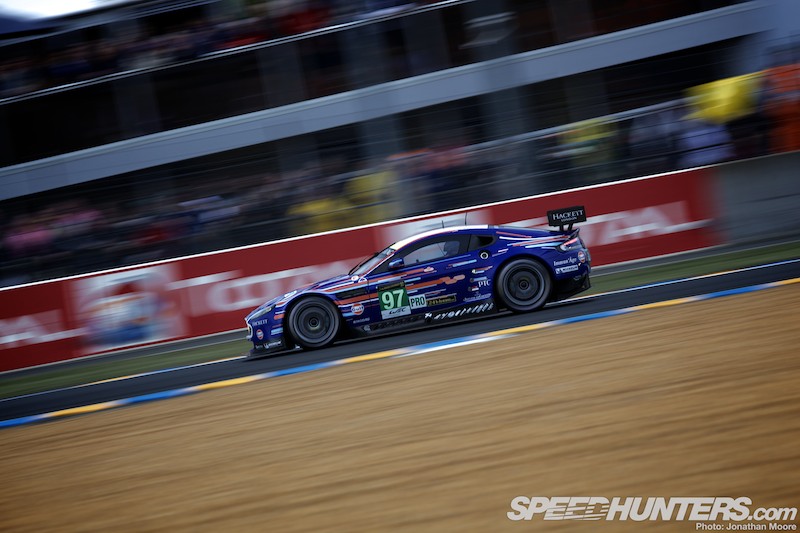
The team made the decision to stay in the race on the express wishes of Allan’s family: the remaining four Vantages would continue.
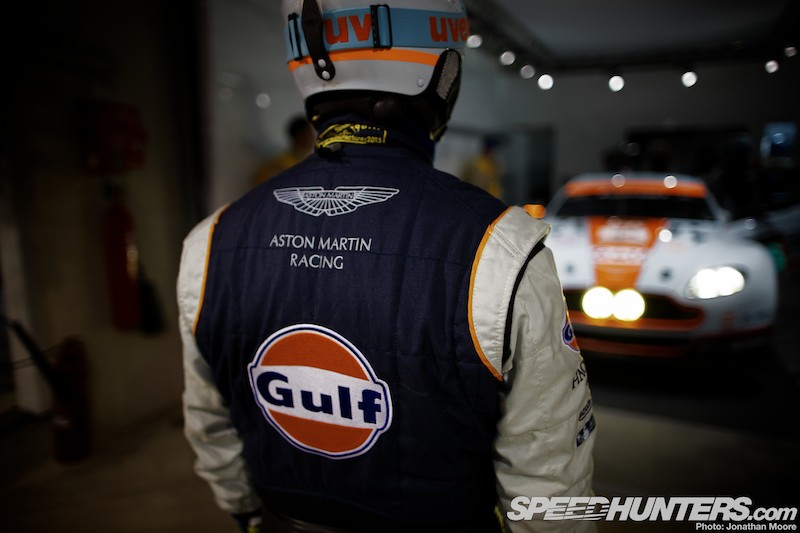
The team regrouped, took a deep breath and dug deep.

From the point of view of the race, the resulting long safety car split off the leading group of GTE-Pros (including #97 and #99), which prevented the kind of evening long battle we’ve seen in GT over previous years. But of course, everyone’s emotions were mixed.
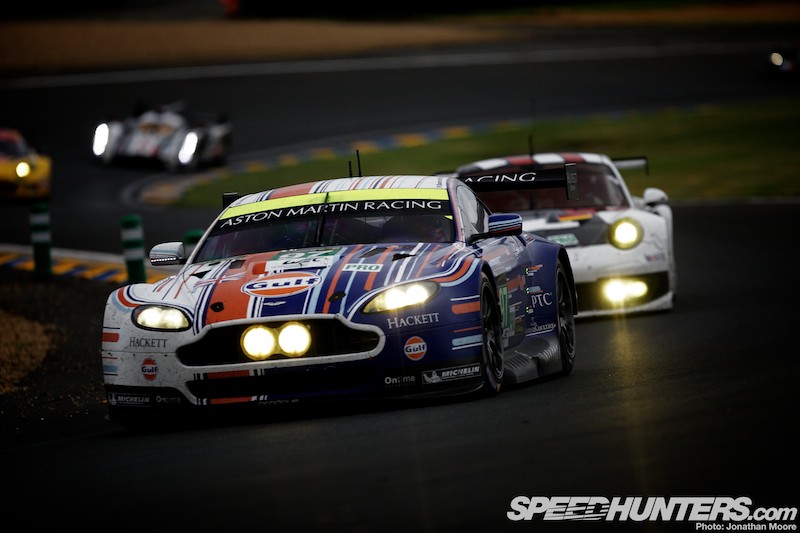
The leading Pro Vantages continued to hold a lead – and often a one-two – for most of the evening and into the night…
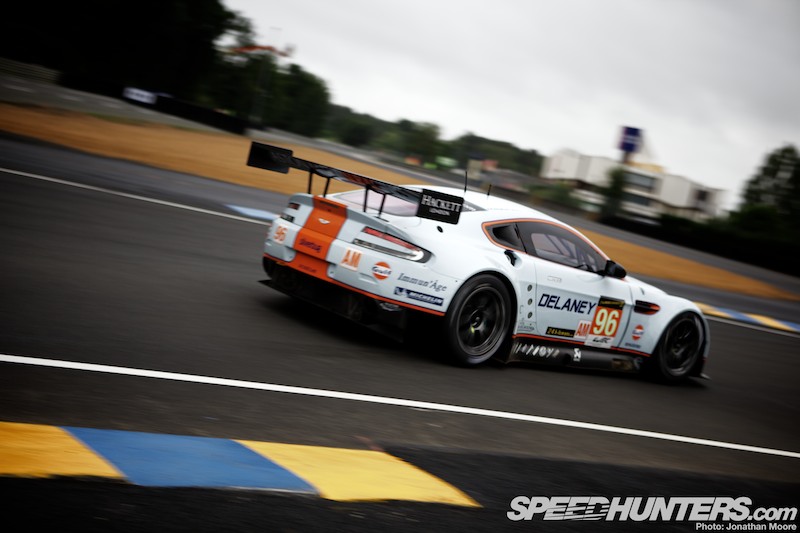
… though back in Am, an early delay for the #96 Vantage had dropped the car almost to the back of their class, and the three drivers would spend the rest of the race desperately trying to make up ground.
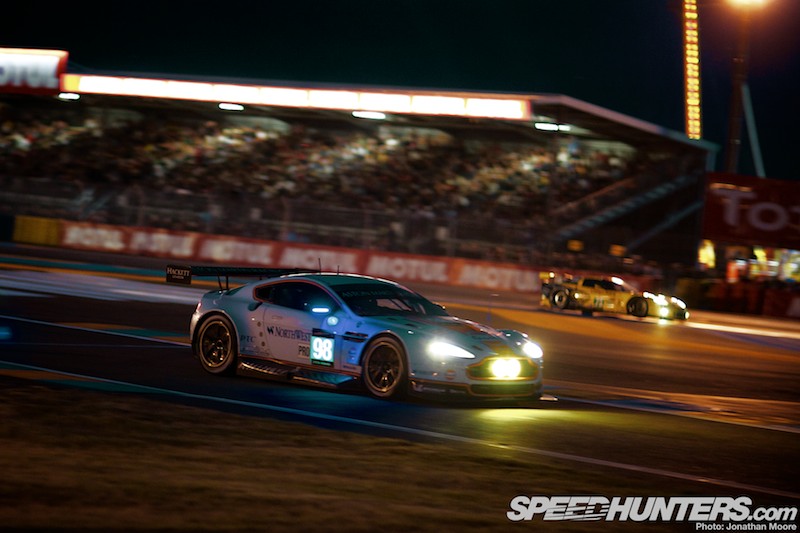
As night fell, the battle in GTE-Pro came down to a straight fight between Porsche and Aston Martin, with the #99 car leading and #97 in third, sandwiching the #91 Porsche. Yet more safety cars broke up the race, and during another neutralisation at night the team pulled all three Pro Vantages into the pits for brake changes; soon after, more rain hit the circuit.
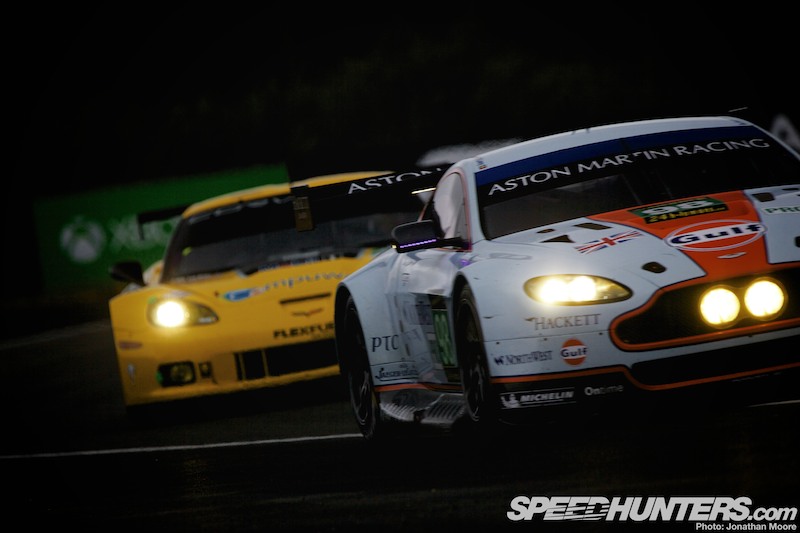
Having got through the night, Aston Martin tried to concentrate on the final daylight run to the flag. But things began to unravel… Like #96, the #98 car had suffered delays early on, and finally succumbed to a major failure in the the 17th hour.
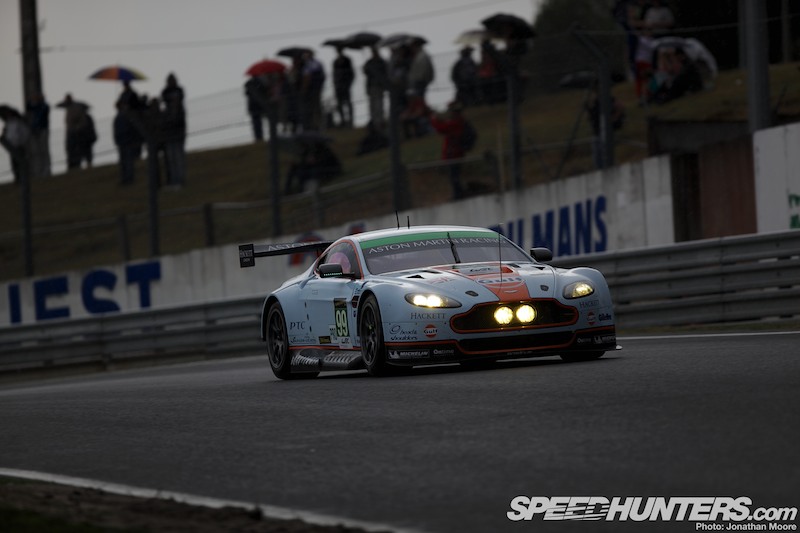
Umbrellas were up and down around the track as the weather continued its schizophrenic movements. In these situations, safety cars often beget safety cars – and so it was at Le Mans. Several times the green flags flew, only for the course to soon go yellow again after another incident in the greasy, treacherous conditions.
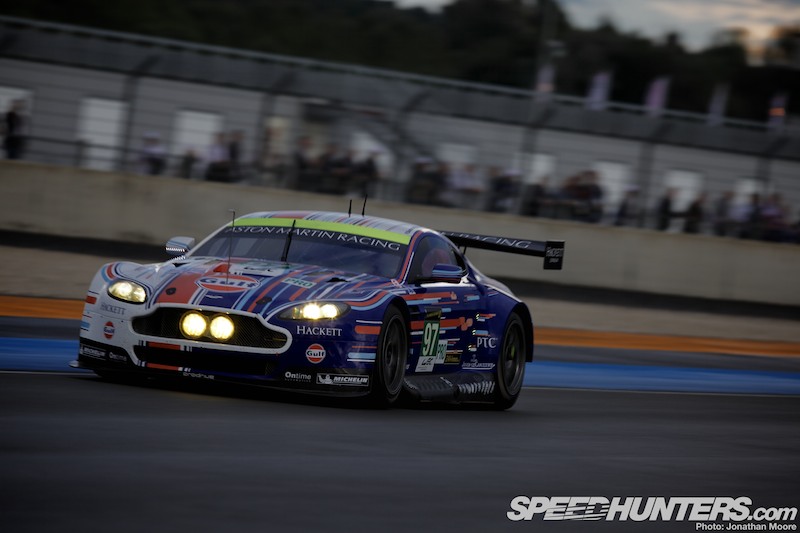
Although nothing could be as bad as #95’s crash, the team suffered yet another blow to their morale as the sun continued its attempt to vainly push through the grey and miserable clouds of the morning.

Fred Makowiecki was exiting the first chicane on Hunaudières with a clear lead in Pro when he lost the back of #99, pitching the car into the barrier and instantly putting the Vantage out of the race and handing Porsche the lead.
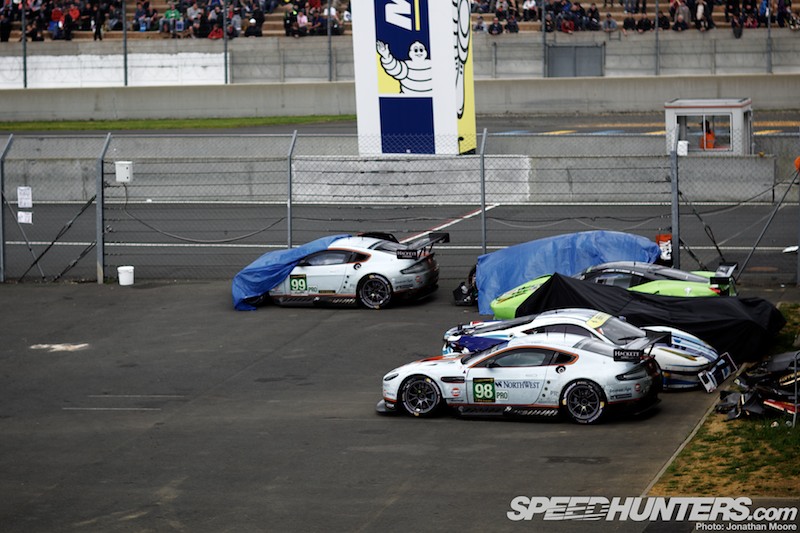
Parc Fermé now contained the wrecked remains of #99 and the stricken #98 – AMR had now just a single car in each class.
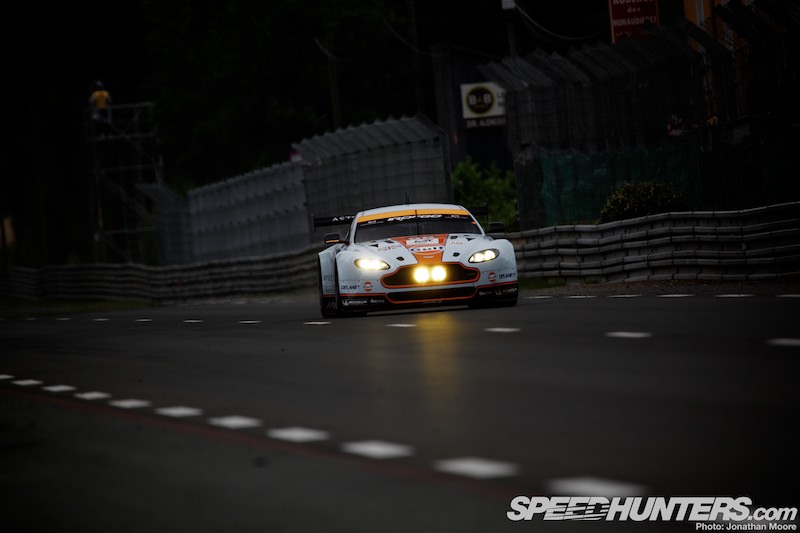
Rain continued its intermittent sprinkling of the track, and eventually it proved the team’s downfall.
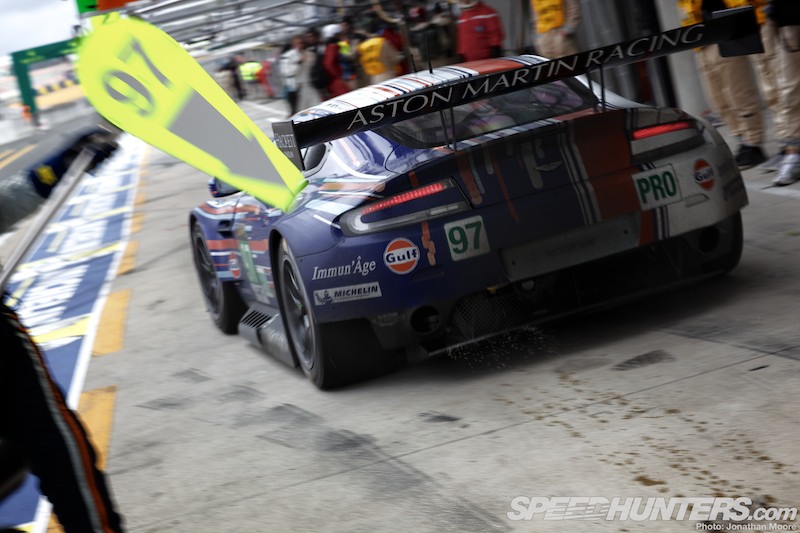
As the final hours counted down yet more rain fell: with Porsche coming on strong and their 911s on a mixed strategy (one car on wets, the other slicks), AMR had to make a choice on which tyres to fit to the #97 car. First wets were fitted, then removed, and slicks bolted on.
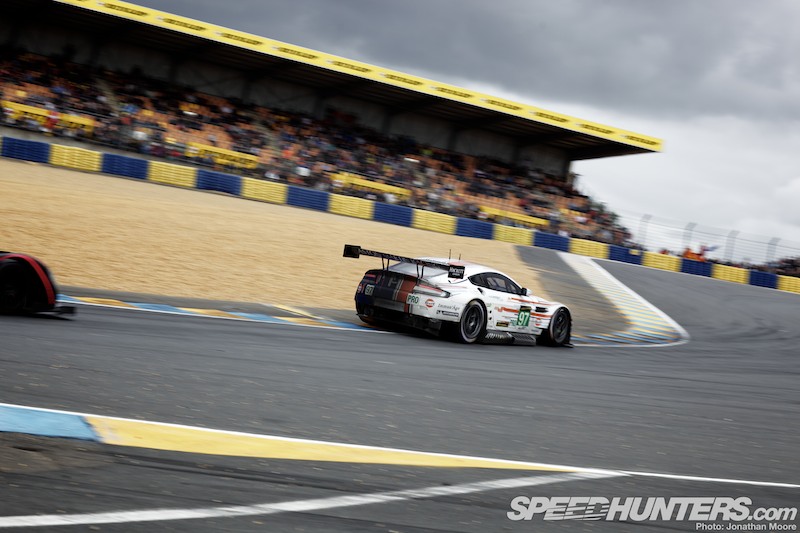
It didn’t work out. The Aston was forced to pit again, and Porsche consolidated their one-two. #97 would have to settle for the final step of the podium after a long, hard race for the entire team.
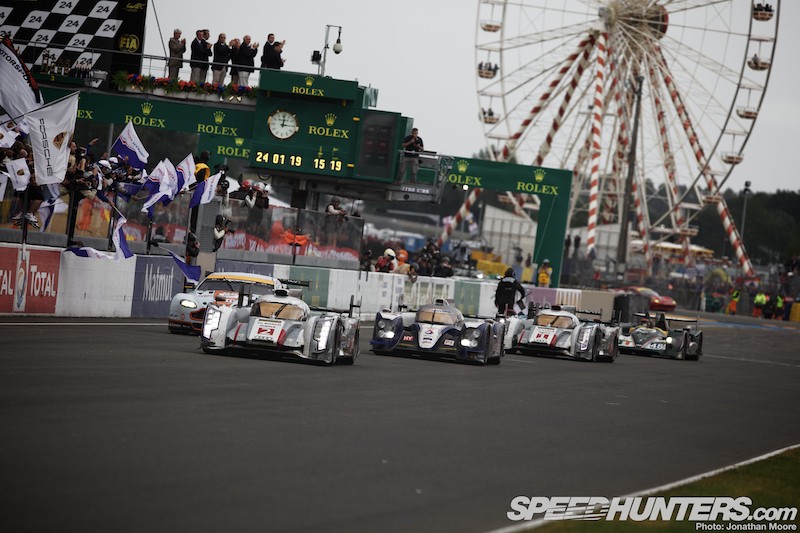
The clock ticked over 3pm on Sunday, and the #96 Am Vantage slotted in behind the leading trio of cars to cross the line…
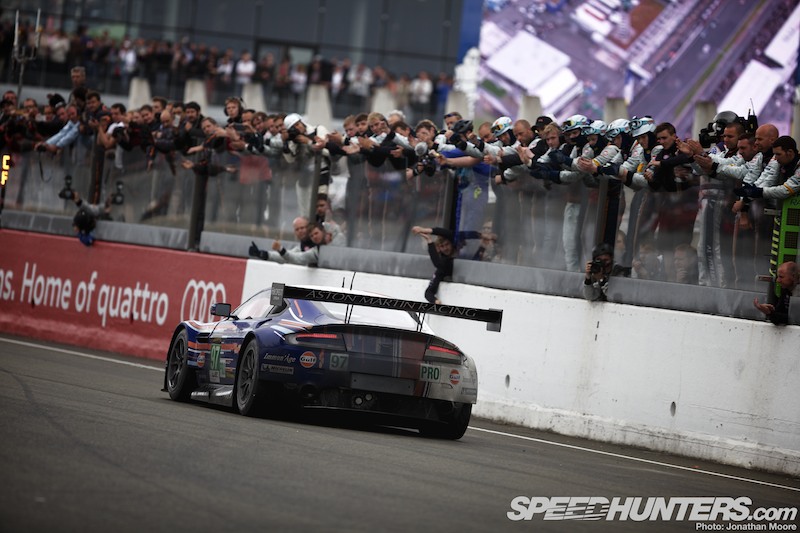
… and soon after the sole remaining Pro car was brought across the line and passed the tired but relieved team. It wasn’t the result they’d hoped for before the race, and certainly not a situation anyone wanted to be in, but crossing the line could at least provide some finality for what had been a terrible weekend emotionally. There is still the World Championship to fight for, and I expect the team to come back strongly for the remaining races – for Allan.
Jonathan Moore
Instagram: speedhunters_jonathan
jonathan@speedhunters.com
Other Le Mans stories on Speedhunters
Le Mans: Temple of Speed
Live Timing for all sessions
Radio Le Mans






fantastic article! Great writing style, perfectly captures the emotions and the Le Mans challenge of Aston Martin. Keep up the great work!
Awesome!